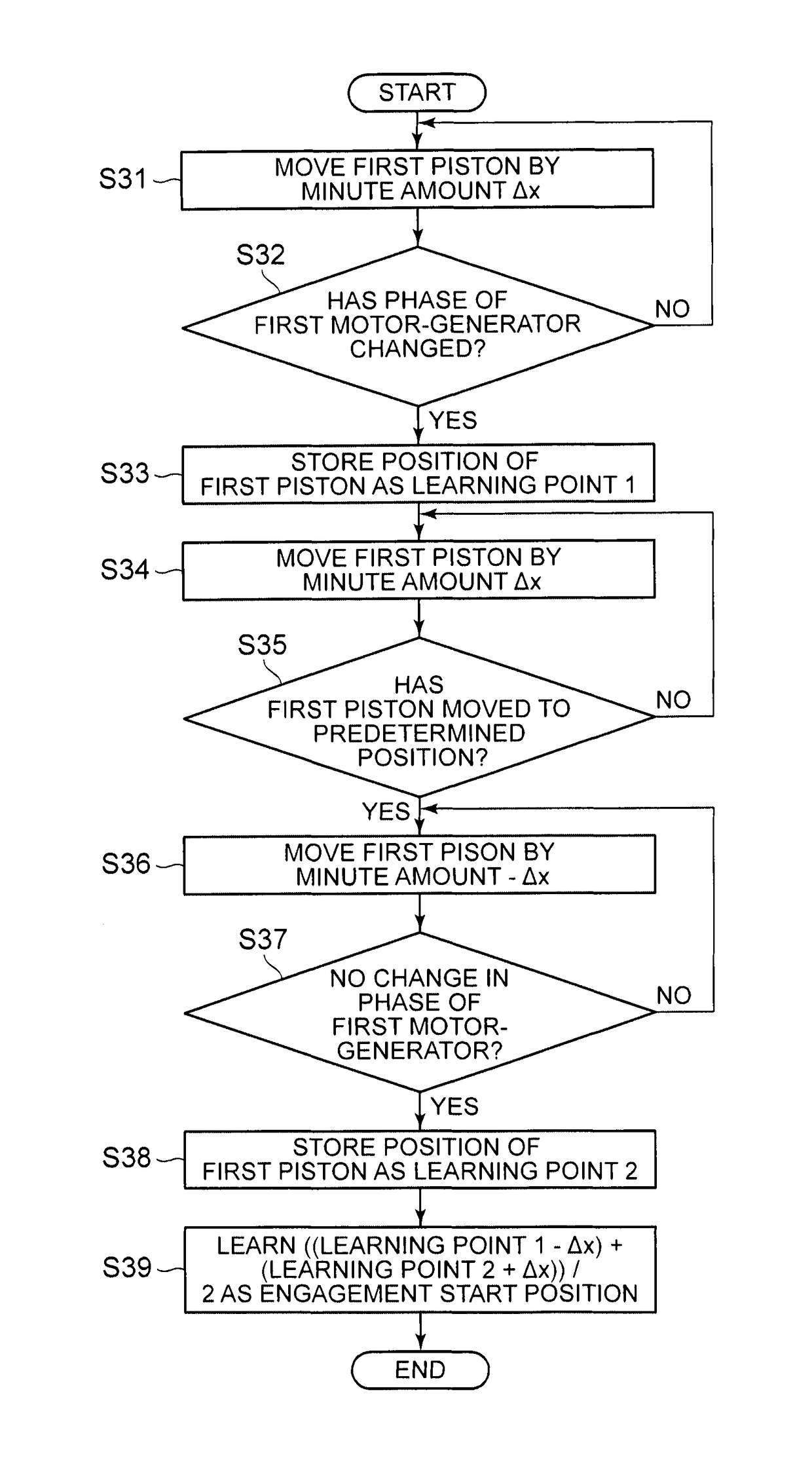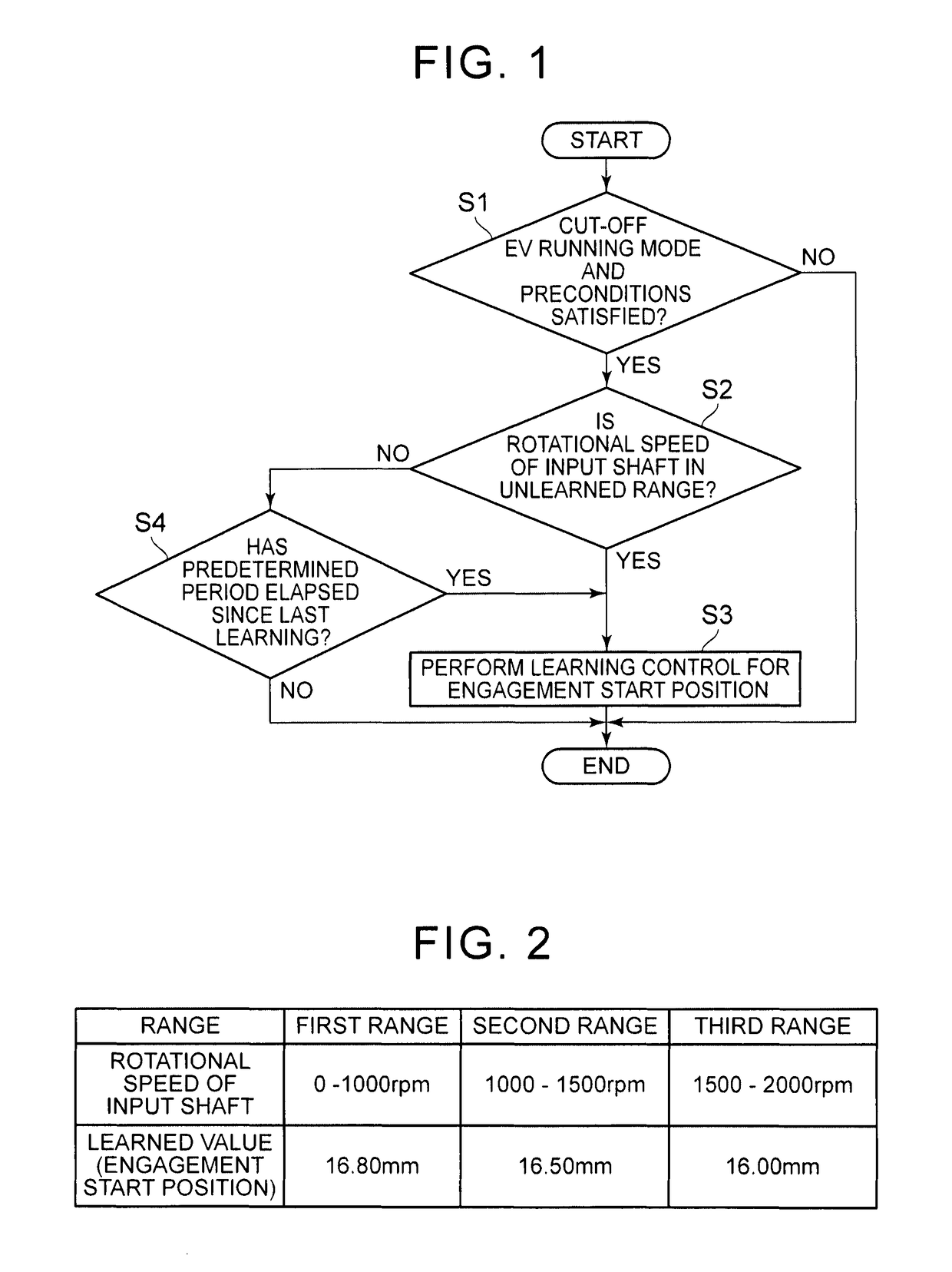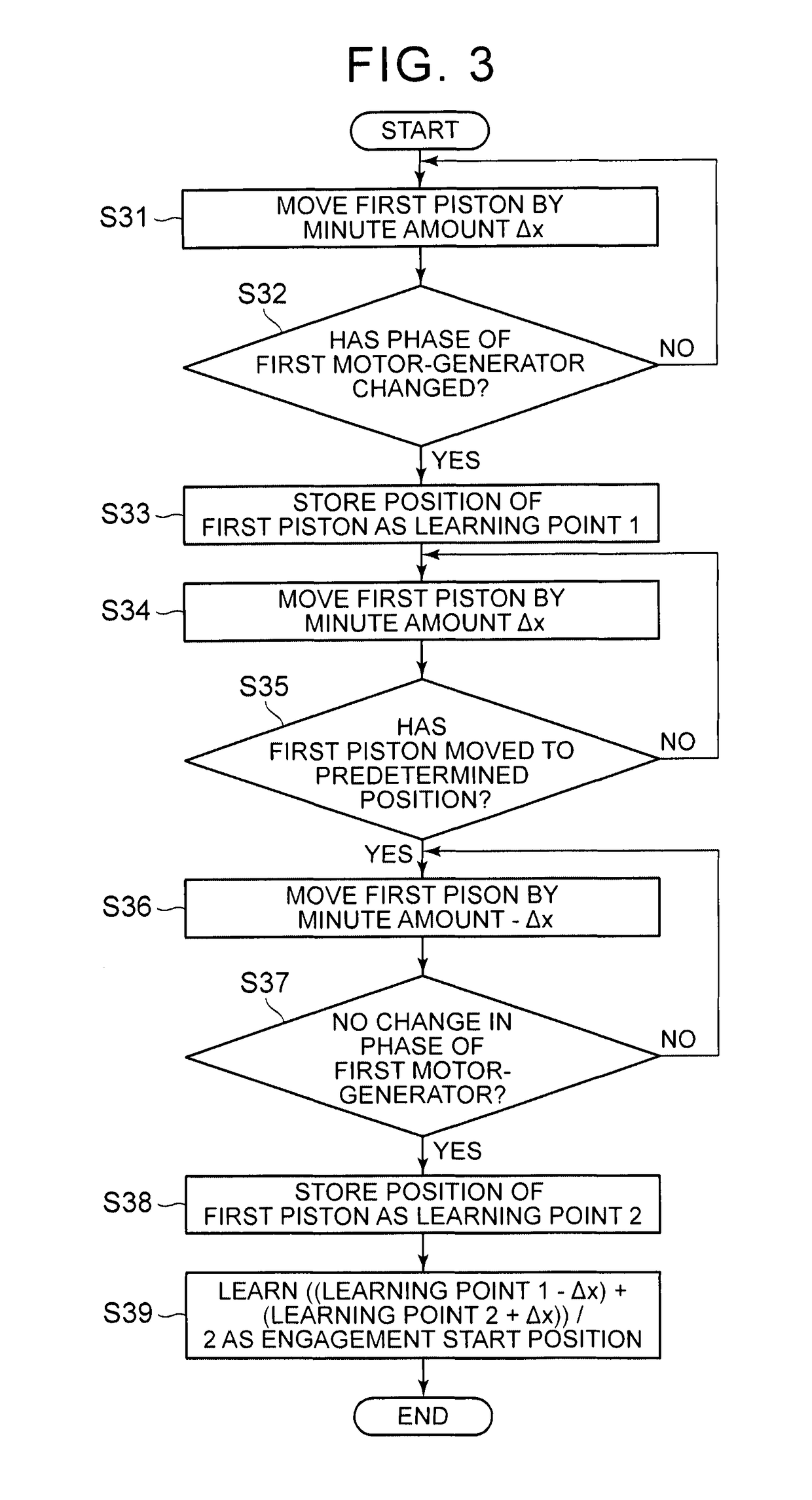Control system for clutch
a control system and clutch technology, applied in the direction of clutches, fluid actuated clutches, non-mechanical actuated clutches, etc., can solve the problems of reducing the controllability of the clutch disc, and reducing the frequency at which the first engaging element is driven. , to achieve the effect of less likely or unlikely to be cumbersome and complicated
- Summary
- Abstract
- Description
- Claims
- Application Information
AI Technical Summary
Benefits of technology
Problems solved by technology
Method used
Image
Examples
Embodiment Construction
[0024]The clutch according to the invention includes the first engaging element that is movable in an axial direction, and a second engaging element that is opposed to the first engaging element in the axial direction and is located so as to be rotatable relative to the first engaging element. When the first engaging element is brought into contact with the second engaging element, the first and second engaging elements are coupled to each other such that torque can be transmitted between these elements. One example of vehicle including the clutch thus configured is schematically shown in FIG. 5. The vehicle shown in FIG. 5 is a hybrid vehicle including an engine 1 and two motor-generators 2, 3 as driving power sources, and a power split device 5 is coupled to an output shaft 4 of the engine 1 via a clutch K0. The power split device 5 is configured similarly to a known power split device used in a two-motor-type hybrid vehicle, and is formed by a single-pinion-type planetary gear tr...
PUM
 Login to View More
Login to View More Abstract
Description
Claims
Application Information
 Login to View More
Login to View More - R&D
- Intellectual Property
- Life Sciences
- Materials
- Tech Scout
- Unparalleled Data Quality
- Higher Quality Content
- 60% Fewer Hallucinations
Browse by: Latest US Patents, China's latest patents, Technical Efficacy Thesaurus, Application Domain, Technology Topic, Popular Technical Reports.
© 2025 PatSnap. All rights reserved.Legal|Privacy policy|Modern Slavery Act Transparency Statement|Sitemap|About US| Contact US: help@patsnap.com



